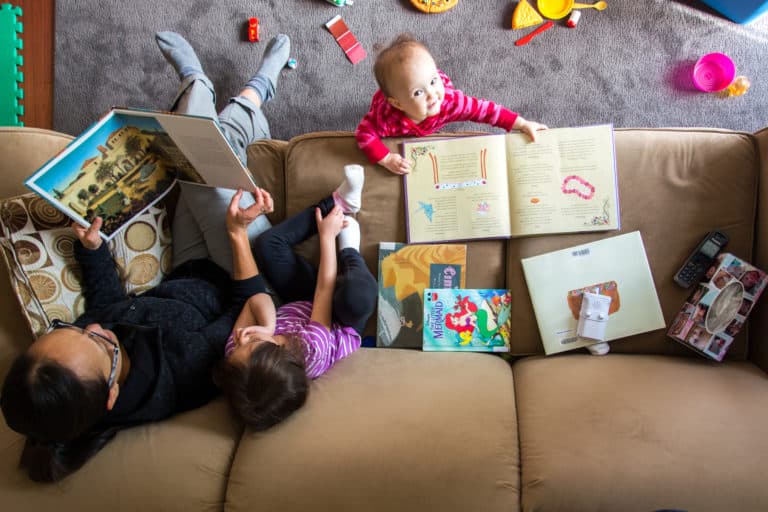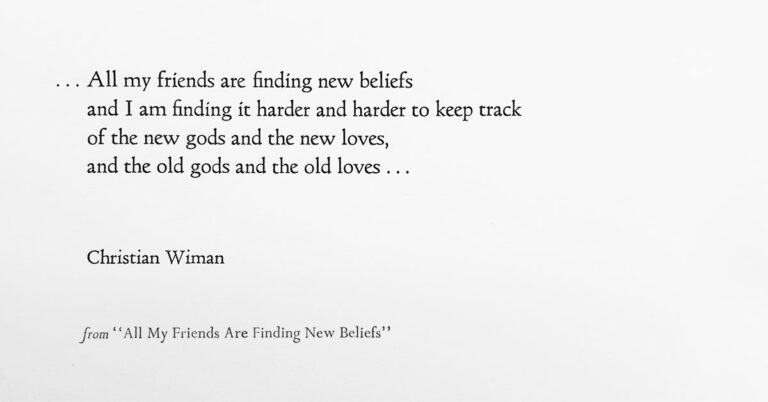
Image by David D/Flickr (CC BY-NC-SA 2.0)..
To Live As If I Believed: The Thin Spaces of Children’s Literature
Do you remember what is was like to believe in Santa? Do you remember the anticipation with which we once went to bed on Christmas Eve, and the wonder with which we woke? While I am able to recall it, I cannot feel the wonder anymore. The believing is something I know that I did once, but the joy that came with it — of seeing the world as a place where magic happened — depreciated with each year of age and experience.
The books of my childhood, though, kept the boundary between the material and the magical thin. Youth protected my credulity: my ability to believe in the seen and the unseen, in the world beyond the book and the world within the book. When I open those same books now, I believe all over again. I retreat through a portal into the unseen, I meet old friends, and I witness old wonders.
I’m nearing forty, and I have yet to latch onto books for grown-ups. I have almost finished re-reading From the Mixed-Up Files of Mrs. Basil E. Frankweiler. It’s a book about two children who run away to New York City and live for a week in the Metropolitan Museum. I bought the book for my kids.
Piketty, Gone Girl, and self-help books stack up on my bedside table, because the volumes that actually end up between my bed sheets, again and again, are off an attic shelf bequeathed to my children: A Wrinkle in Time, The Last Battle, The House with a Clock in Its Walls, to name a few. And Dear Mr. Henshaw, Cannery Row, Charlotte’s Web, to name some more. As I gleefully crawled into bed with Mrs. Frankweiler last night, it finally dawned on me why.
The canopy of bygone bed sheets, where I discovered these books for the first time as a child, were a “thin place.” They suspended the boundary between the world in which I lived and the world in which the characters of the books lived. To paraphrase Kristin Dombek, it’s not that I exactly believed in the universes created by Madeleine L’Engle, C.S. Lewis, or John Bellairs, “but I lived as if I did.”
Childhood is guarded by the hope and audacity to believe in things which people, individual experience, and rationality will gradually make difficult to maintain. This willingness to believe is a way of seeing, which our society allows as long as we are young. It is an unbridled way of looking at the world which we are encouraged to recant as we mature.
As an adult, I have known only one experience where irrationality and the unseen remain unbridled and protected. Art has kept the boundary between my “grown-up” world and the immaterial thin. Remember that scene in The Shawshank Redemption when Andy Dufresne broadcasts a Mozart aria from the prison speakers? The boundaries of the jail are suspended as he listens to that aria. Through the beauty of the music, he and his inmates defy the confinements of their physical situation.
Because God belongs to the immaterial, art has, by default, sustained my perception of the sacred unseen and the divine. Literature, museums, music, and the creative process have, as thin places, bridged my adult faith with the unbridled believing of my youth. They have formed the mason jars of my faith, preserving it after I began to believe critically.
Art has been the reason that, despite the confinements of churches and people, I still believe in one God, Creator Almighty, maker of heaven and earth, and of all things visible and invisible — and in:
» The paintings of Ilya Mashkov in Moscow’s Tretyakov Museum;
» El Greco’s long-faced saints in a Las Palmas Cathedral;
» Dmitri Shostakovich’s string quartet in C minor, opus 110;
» A hazy YouTube video of Martha Graham’s Lamentation;
» My cassette recording of Ted Hughes reading W.H. Auden’s “Stop all the clocks”;
» The opening sentence of Franz Kafka’s Metamorphosis;
“One morning, when Gregor Samsa woke from troubled dreams, he found himself transformed in his bed into a horrible vermin. He lay on his armour-like back, and if he lifted his head a little he could see his brown belly, slightly domed and divided by arches into stiff sections. The bedding was hardly able to cover it and seemed ready to slide off any moment. His many legs, pitifully thin compared with the size of the rest of him, waved about helplessly as he looked.
» Living room dancing to A-ha’s “Take on Me”;
» The airport scenes in Love Actually;
» The counterpoint sung by Violetta and Alfredo’s father in La Traviata;
» The Professor’s logic in The Lion, the Witch, and the Wardrobe:
“Logic!” said the Professor half to himself. “Why don’t they teach logic at these schools? There are only three possibilities. Either your sister is telling lies, or she is mad, or she is telling the truth. You know she doesn’t tell lies and it is obvious that she is not mad. For the moment then and unless any further evidence turns up, we must assume that she is telling the truth.”
Art is the reason, then, that God feels so much closer when I re-open a children’s book and feel a familiar world unfold, its threshold lapping forward with the invitation to live “as if I believed.”
When the Old Testament prophet Isaiah writes, “Seek the Lord while he may be found, call on him while he is near,” it’s not, for me, about finding God through good timing, but about seeking God in thin places. It’s not about chronos, or chronological time, but about kairos. Art is created in kairos — an indeterminate time, unbound by the clock, where God is ever present. When art is shared and experienced, that thin place erupts open again for the mind and heart of the believer.


Share your reflection